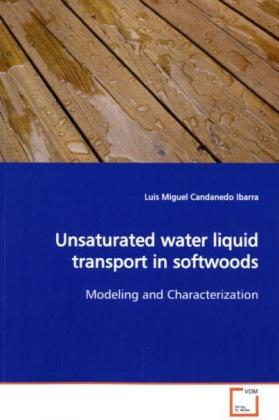
Zustellung: Mo, 21.07. - Mi, 23.07.
Versand in 4 Tagen
VersandkostenfreiBestellen & in Filiale abholen:
As a construction material, wood is used in
structural elements and building envelope components
such as window frames and cladding. These wooden
components are exposed to wetting by rain either
directly (cladding) or as a result of a failure
(rain infiltration). When the moisture content
levels are within a certain range, mold growth and
rot can occur, which may be detrimental for the
health of the occupants, decrease structural
strength and destroy the aesthetic appearance of a
building. In the hygroscopic range (vapour phase), a
well-developed theory explains the absorption of
water in the vapor phase when the relative humidity
is withing 0 to 95%. However, liquid mass
directional diffusivities of water for many Canadian
wood species have not yet been investigated. The
main objectives of this study were to quantify
averaged values of directional diffusivities for a
specific type of wood (jack pine), and to develop a
transient modeling approach for liquid-phase water
transport in wood considering the orthotropic effect
of the wood structure.
structural elements and building envelope components
such as window frames and cladding. These wooden
components are exposed to wetting by rain either
directly (cladding) or as a result of a failure
(rain infiltration). When the moisture content
levels are within a certain range, mold growth and
rot can occur, which may be detrimental for the
health of the occupants, decrease structural
strength and destroy the aesthetic appearance of a
building. In the hygroscopic range (vapour phase), a
well-developed theory explains the absorption of
water in the vapor phase when the relative humidity
is withing 0 to 95%. However, liquid mass
directional diffusivities of water for many Canadian
wood species have not yet been investigated. The
main objectives of this study were to quantify
averaged values of directional diffusivities for a
specific type of wood (jack pine), and to develop a
transient modeling approach for liquid-phase water
transport in wood considering the orthotropic effect
of the wood structure.
Produktdetails
Erscheinungsdatum
25. Mai 2009
Sprache
englisch
Seitenanzahl
128
Autor/Autorin
Luis Miguel Candanedo Ibarra
Verlag/Hersteller
Produktart
kartoniert
Gewicht
209 g
ISBN
9783639117936
Bewertungen
0 Bewertungen
Es wurden noch keine Bewertungen abgegeben. Schreiben Sie die erste Bewertung zu "Unsaturated water liquid transport in softwoods" und helfen Sie damit anderen bei der Kaufentscheidung.









